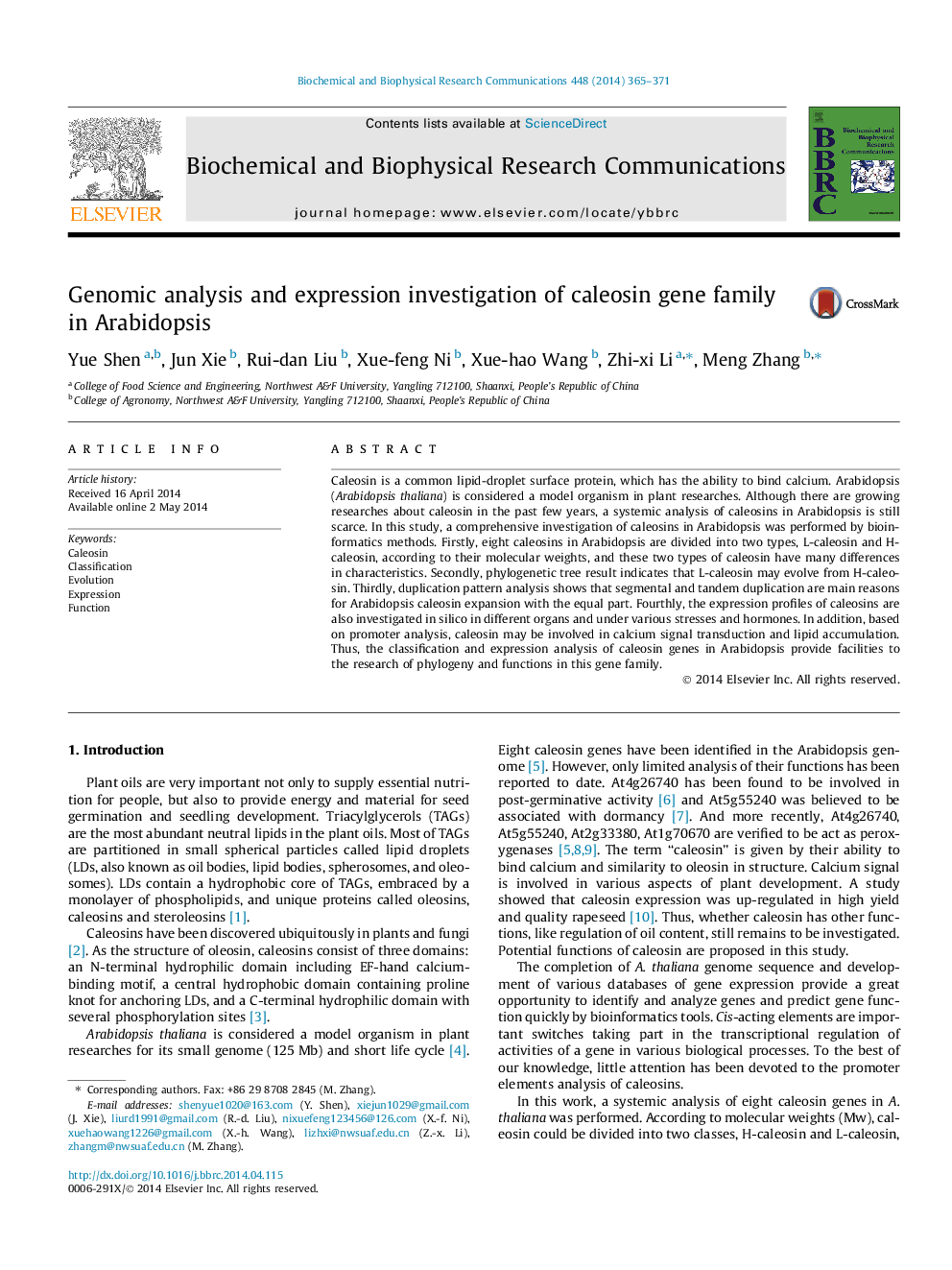| Article ID | Journal | Published Year | Pages | File Type |
|---|---|---|---|---|
| 1928519 | Biochemical and Biophysical Research Communications | 2014 | 7 Pages |
•Caleosins in Arabidopsis are divided into two types, L-caleosin and H-caleosin.•L-caleosin may evolve from H-caleosin.•Segmental and tandem duplication are main reasons for caleosin family expansion.•The expression patterns of caleosins were investigated in silico.•Caleosin may be involved in signal transduction and lipid accumulation.
Caleosin is a common lipid-droplet surface protein, which has the ability to bind calcium. Arabidopsis (Arabidopsis thaliana) is considered a model organism in plant researches. Although there are growing researches about caleosin in the past few years, a systemic analysis of caleosins in Arabidopsis is still scarce. In this study, a comprehensive investigation of caleosins in Arabidopsis was performed by bioinformatics methods. Firstly, eight caleosins in Arabidopsis are divided into two types, L-caleosin and H-caleosin, according to their molecular weights, and these two types of caleosin have many differences in characteristics. Secondly, phylogenetic tree result indicates that L-caleosin may evolve from H-caleosin. Thirdly, duplication pattern analysis shows that segmental and tandem duplication are main reasons for Arabidopsis caleosin expansion with the equal part. Fourthly, the expression profiles of caleosins are also investigated in silico in different organs and under various stresses and hormones. In addition, based on promoter analysis, caleosin may be involved in calcium signal transduction and lipid accumulation. Thus, the classification and expression analysis of caleosin genes in Arabidopsis provide facilities to the research of phylogeny and functions in this gene family.
